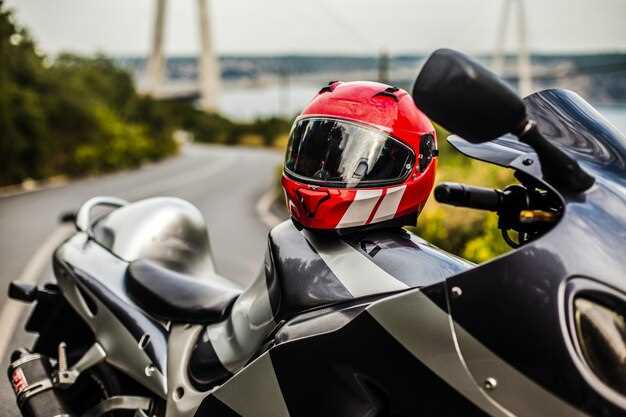
Choosing the right motorcycle helmet is crucial for every rider who prioritizes safety and comfort on the road. A quality helmet serves as the first line of defense against potential injuries during accidents, making it an essential part of any motorcyclist’s gear. With numerous options available on the market, selecting the best helmet can be a daunting task, especially when it’s vital to balance protection with comfort.
In this article, we will explore the top motorcycle helmets that excel in providing both safety features and comfort during rides. From advanced materials that enhance durability to innovative designs that maximize airflow and fit, understanding the key attributes of these helmets can significantly impact your riding experience. Whether you’re a seasoned rider or a newcomer to the motorcycle community, investing in a high-quality helmet is one of the best decisions you can make.
As we dive into the specifics, we’ll also address important factors such as fit, weight, and additional features that enhance rider comfort without compromising safety. By the end of this article, you’ll have a comprehensive understanding of which helmets stand out and why they should be considered an integral part of your motorcycle gear.
Top Rated DOT Certified Helmets for Maximum Protection

When it comes to motorcycle safety, having a reliable helmet is paramount. DOT certified helmets meet rigorous standards set by the Department of Transportation, ensuring that they provide maximum protection for riders. Here’s a look at some of the top rated helmets in this category that prioritize both safety and comfort.
1. Shoei RF-1400: Known for its aerodynamic design and lightweight construction, the Shoei RF-1400 offers excellent ventilation and noise reduction. This full-face helmet features a multi-ply matrix shell and a dual-layer EPS liner, which enhances its impact absorption capabilities, making it a top choice for serious riders focused on safety.
2. Bell Qualifier DLX: The Bell Qualifier DLX is another outstanding option that balances affordability with premium features. It comes equipped with a removable and washable moisture-wicking interior, providing comfort during long rides. Its unique Velocity Flow Ventilation system keeps your head cool while addressing safety needs with its robust construction.
3. HJC IS-17: This helmet symbolizes a harmonious blend of safety and comfort. The HJC IS-17 incorporates advanced polycarbonate composite materials for a lightweight yet strong shell. Additionally, its SmartVent system provides optimal airflow, ensuring that riders remain comfortable without compromising protection.
4. AGV K6: The AGV K6 is engineered for both touring and sport riding. It features a carbon and aramid fiber shell for enhanced durability and lower weight. The helmet’s patented safety technology is designed to provide maximum protection without sacrificing comfort, making it a favorite among experienced riders.
5. Arai XD4: This versatile helmet is perfect for both on-road and off-road adventures. The Arai XD4 provides optimal safety thanks to its exceptional shell integrity and impact-absorbing liner. The interior is designed for comfort, featuring a multi-density foam that adapts to the rider’s head shape.
Investing in a DOT certified helmet is crucial for ensuring rider safety while enhancing the overall experience. These top-rated helmets exemplify the perfect combination of protective gear and comfort, making them ideal companions for any motorcycle journey.
Features to Look for When Choosing a Comfortable Motorcycle Helmet

When selecting a motorcycle helmet, comfort and safety should top your priority list. One crucial feature is the helmet’s fit. It should snugly conform to your head shape without causing pressure points. A well-fitted helmet enhances both comfort during long rides and safety in the event of an accident.
Another important aspect is the weight of the helmet. Lightweight helmets reduce strain on your neck, especially during extended use. A heavyweight helmet can lead to fatigue, making long journeys uncomfortable. Opt for materials like polycarbonate or composite fiberglass that balance safety and reduced weight.
Ventilation is essential for comfort, especially in warmer conditions. Look for helmets with adequate airflow systems that allow for temperature regulation. Proper ventilation helps prevent sweating and discomfort, keeping you focused on the ride rather than on your gear.
Padding is equally important. High-quality inner padding materials, such as moisture-wicking fabrics, contribute to a more comfortable fit. Removable and washable liners are advantageous, offering hygiene and convenience, particularly for riders who cover long distances regularly.
Don’t overlook the face shield features. A clear and scratch-resistant visor is critical for visibility. Additionally, consider helmets with anti-fog coatings for adverse weather conditions and tinted visors for bright sunlight. These factors enhance your overall riding experience and maintain safety on the road.
Lastly, check for safety certifications, such as DOT, ECE, or Snell ratings. These certifications ensure that the helmet meets high safety standards. Comfortable helmets shouldn’t compromise safety; thus, choosing one with reputable safety ratings ensures protection without sacrificing comfort.
Comparing Full-Face, Modular, and Open-Face Helmets for Everyday Riding
When it comes to motorcycle gear, the choice of helmet is critical for ensuring both safety and comfort during rides. There are three primary types of helmets: full-face, modular, and open-face. Each offers distinct advantages and disadvantages, making them suitable for different riding preferences and situations.
Full-face helmets provide the highest level of protection. Enclosing the entire head, they feature a solid chin bar and a complete visor to shield against wind, debris, and impacts. This design maximizes safety, particularly in high-speed scenarios or in case of accidents. Many full-face models also incorporate advanced ventilation systems, enhancing comfort for everyday riding.
Modular helmets, also known as flip-up helmets, combine elements of both full-face and open-face designs. They feature a hinged front that allows the rider to flip up the chin bar, offering convenience for communication or getting fresh air without removing the helmet. While they provide better versatility compared to full-face helmets, it’s important to ensure a snug fit to maintain safety during a crash, as the movable parts can sometimes compromise structural integrity.
Open-face helmets, or three-quarter helmets, cover the top, back, and sides of the head but leave the face exposed. They offer excellent visibility and airflow, making them a popular choice for casual riders or those in warmer climates. However, they come with a trade-off in terms of safety, as they do not protect the chin or face. Riders should consider their environment and risk tolerance when opting for this type of helmet.
In summary, the choice between full-face, modular, and open-face helmets depends largely on an individual’s riding style, environment, and comfort preferences. Full-face helmets stand out for safety, while modular helmets offer flexibility, and open-face helmets provide freedom and airflow. Always prioritize proper fit and comfort in any selection to enhance your overall riding experience while ensuring your safety on the motorcycle.
